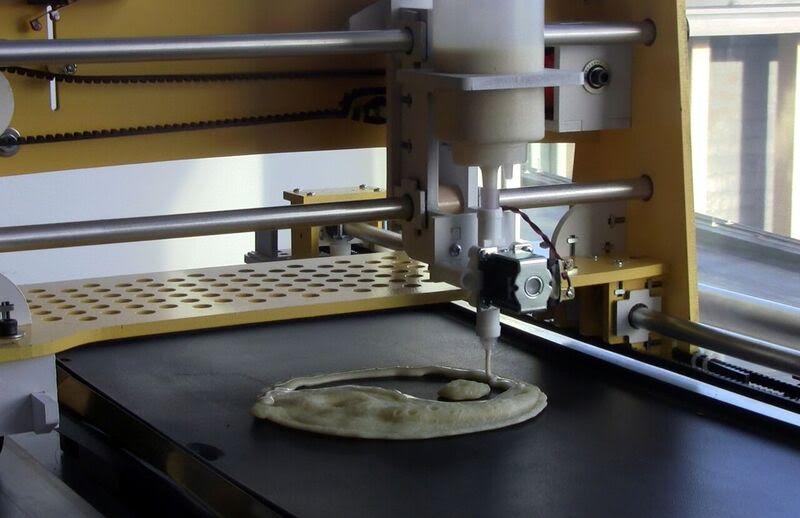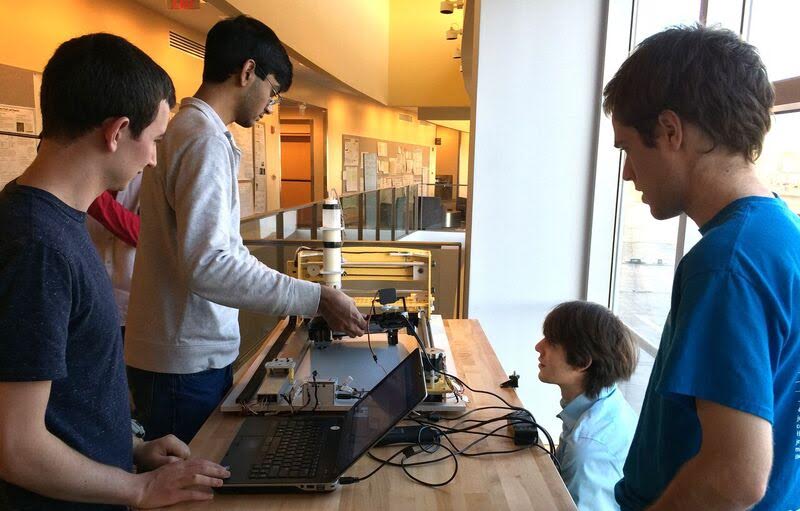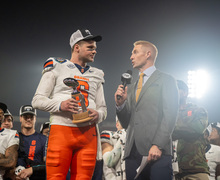These students at Olin College built a machine that prints pancakes
Courtesy of Trent Dye
The Pancake CNC Machine can turn any image designed on computer software into a pancake.
Even beginner cooks can master the science of a perfectly golden brown pancake. But last semester at Olin College, several engineering students redefined the science of what constitutes a well-made pancake.
For their final project in Principles of Engineering, the four sophomore students at the Franklin W. Olin College of Engineering made the Pancake CNC Machine. Using the machine, any image designed on computer software can be made into a pancake.
“The very first thing we had the final prototype make was ‘hello’ written in a script-like font,” said Kevin Crispie, one of the group members. “But later we made everything from a rocket to a yin-yang symbol.”
The requirements for the project were open-ended, Crispie said. It had to have cross-discipline engineering aspects, he said, including mechanical, software and electrical features. Each group had about eight weeks and $250 to complete the project.
Group member Suraj Shroff said the group members were all friends prior to the beginning of the project, and since group member Trent Dye had mentioned the idea of a pancake machine before, the decision to move forth with that as the project idea was pretty “quick and unanimous,” Shroff said.
The Pancake CNC machine uses air pressure to push batter out of an old ketchup bottle. A software system controls the motors to drive the mechanism in two axes — one that moves up and down and another that moves side to side — to position the bottle, which holds the batter, above the griddle, Crispie said.
The machine also has a user interface that is used to draw the design which will become a pancake. Crispie said the only limitations to the machine are the creativity of the user designing behind the computer screen and the sharpness of the lines.
“When the user designs an image on the computer with darker parts the software knows to put that down first and cook it for longer so it will be darker in certain areas so you can do shading,” Crispie said.
The planning portion of the project was actually quite short, Crispie said, and the group spent it deciding which features of the machine were of the highest priority. They did a few prototypes, but a majority of the time was spent building and refining the machine, Crispie said.
“Most teams got a working prototype, but our team really wanted to go one step further and make it look polished,” Shroff said. “We spent almost a week on this aspect of the project.”
If the group had had more time, Crispie said it would have liked to implement different color changes, more sophisticated software and finer control. He added that those things were prioritized below the basic design work and didn’t fit into the short time frame of the project.
Dye said they spent 20 to 30 hours a week on the project.
“Looking back, it’s kind of crazy to see what we achieved,” Dye said. “We couldn’t have done much more in those nine weeks.”
The last week of the project was the most telling, Dye said. In the weeks prior, the team had designed all of the parts separately, and during the last week they had to put all of them together, he added.
“One thing that someone at my old job told me once was, ‘Any project that you will do will take three times as long as you have anticipated it to, even when you apply this rule.’ This was definitely true in our case,” Dye said. “But I think that was what the course was supposed to teach us. We learned how to handle snags when you have mechanical, electrical or software failures.”
When the project was finally completed, the group had the opportunity to demonstrate it at Olin’s year-end expo, Dye said. Students brought projects they worked on for fellow students, fellow faculty and students from local schools to see.
Dye said his favorite interactions with the machine were from the Olin Expo.
“We had designed something that, even if you didn’t know exactly how it worked, you could interact with it,” he said. “We got a lot of smiling people. I think they were mesmerized by seeing it print out pancakes of all kinds.”
Published on January 27, 2016 at 10:55 pm
Contact BreeAnna: blposhek@syr.edu







